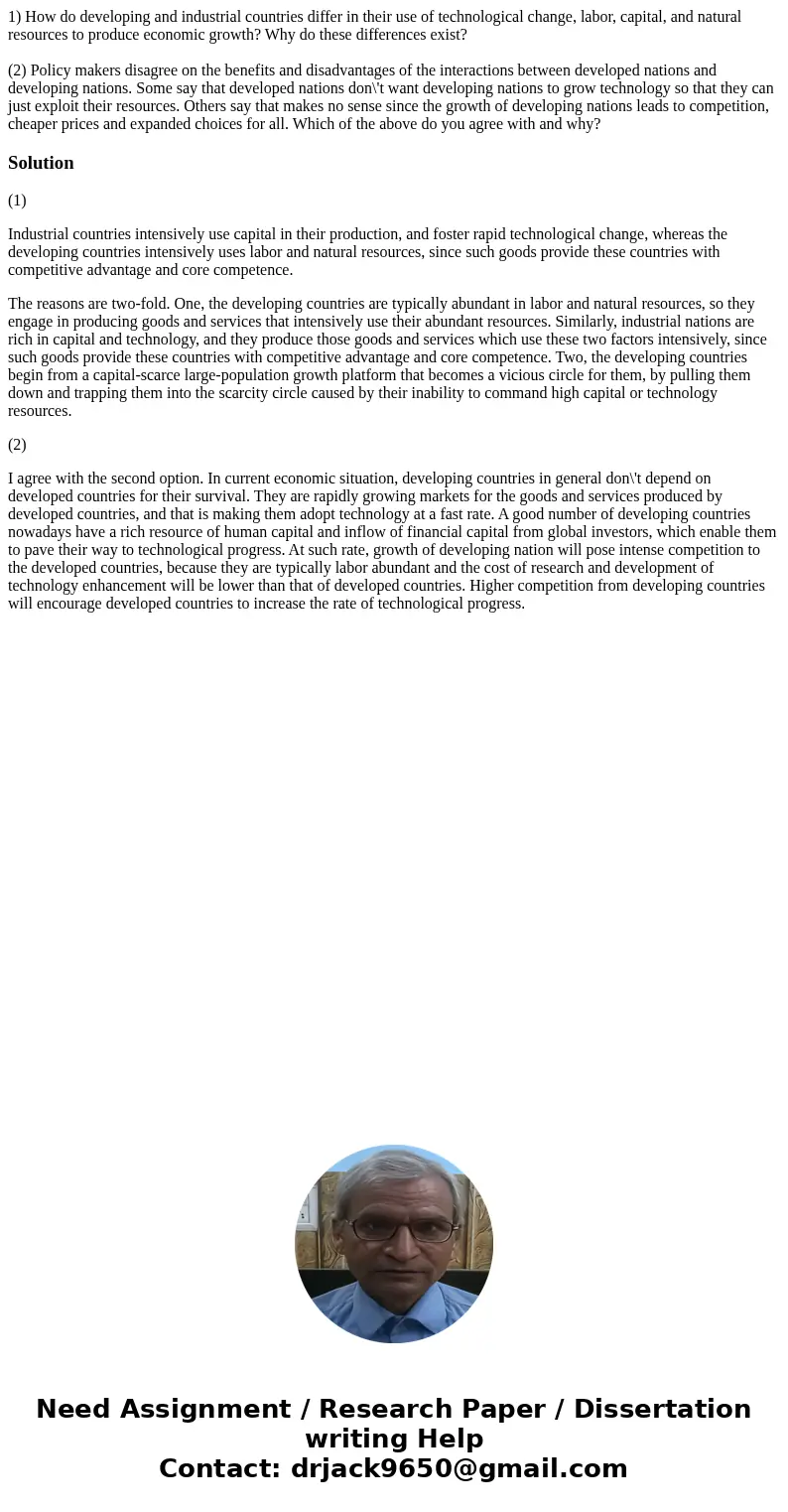1 How do developing and industrial countries differ in their
1) How do developing and industrial countries differ in their use of technological change, labor, capital, and natural resources to produce economic growth? Why do these differences exist?
(2) Policy makers disagree on the benefits and disadvantages of the interactions between developed nations and developing nations. Some say that developed nations don\'t want developing nations to grow technology so that they can just exploit their resources. Others say that makes no sense since the growth of developing nations leads to competition, cheaper prices and expanded choices for all. Which of the above do you agree with and why?
Solution
(1)
Industrial countries intensively use capital in their production, and foster rapid technological change, whereas the developing countries intensively uses labor and natural resources, since such goods provide these countries with competitive advantage and core competence.
The reasons are two-fold. One, the developing countries are typically abundant in labor and natural resources, so they engage in producing goods and services that intensively use their abundant resources. Similarly, industrial nations are rich in capital and technology, and they produce those goods and services which use these two factors intensively, since such goods provide these countries with competitive advantage and core competence. Two, the developing countries begin from a capital-scarce large-population growth platform that becomes a vicious circle for them, by pulling them down and trapping them into the scarcity circle caused by their inability to command high capital or technology resources.
(2)
I agree with the second option. In current economic situation, developing countries in general don\'t depend on developed countries for their survival. They are rapidly growing markets for the goods and services produced by developed countries, and that is making them adopt technology at a fast rate. A good number of developing countries nowadays have a rich resource of human capital and inflow of financial capital from global investors, which enable them to pave their way to technological progress. At such rate, growth of developing nation will pose intense competition to the developed countries, because they are typically labor abundant and the cost of research and development of technology enhancement will be lower than that of developed countries. Higher competition from developing countries will encourage developed countries to increase the rate of technological progress.

 Homework Sourse
Homework Sourse